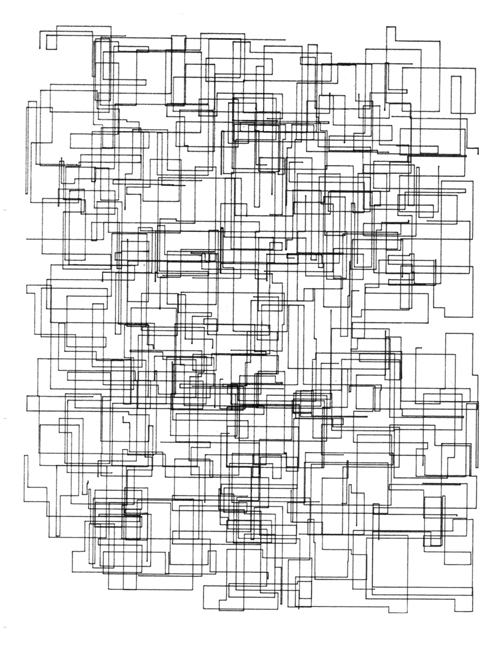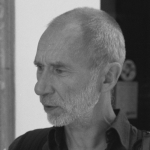Do calculating machines like drawing? And if so, why? Considerations from media archaeology
Frieder Nake will be finishing a busy year with a talk at this year’s Code Mesh LDN (8-9 Nov).
Frieder Nake is one of the originators of ‘computer art’ and has some of his artworks in the Tate collection. In his talk, he will explain why the above title ‘do calculating machines like drawing, and if so, why?’ - is nonsensical. Artificial intelligence can only be a simulacrum of human intelligence, a reduced and computable copy, and nothing more.
To explain, we must go back in time, back to 1965, where, without knowing each other Frieder Nake, A. Michael Noll and Georg Nees, had begun to write computer programs that automatically generated drawings as art.
We are in Stuttgart, Germany. It is 5 February, 1965. We are in the Hahn Hochhaus, close to the city centre, on the 7th or 8th floor. Max Bense, the philosopher, is residing here, in his Institute for Epistemology and History of Science. The seminar rooms are also being used for exhibitions of concrete poetry and art.
As is often the case, a group of professors has come from the fine arts school, the Kunstakademie. They want to witness today's opening of a show announced as Generative computer graphics, by Georg Nees. He is an unknown mathematician working for the Siemens Company. In some way he has programmed a computer such that it controls a drawing machine to generate pretty little images. Bense reads a text, entitled "Principles of Generative Aesthetics". The world has not heard anything like this before. It's a manifesto.
After him, Nees takes over to explain briefly how it is possible to draw by a programmed computer. The audience hardly understands much, but it dawns upon some of them that something great is going on.
One of the art professors addresses Nees: "It is nice and truly interesting, what you tell us, young man. But I wonder: Can you make your machine draw like me? Can you cause it to imitate my ductus?"
Surprise. Nees carefully ponders his answer, hesitating. But then, very decidedly:
"Oh yes, of course I can – (pause) if you tell me how you do it!"
Shock. Appall. The artists exchange quick looks at each other. "Incredible! Is he crazy? Let's go!"
And off they rush, leaving the room, slamming doors, making sounds of disgust. How, on earth, can this man dare to compare our friend's engaged way of doing his art to the mechanistic movements of a machine without soul! They don't realise, and nobody else in the room seems to realise, how Nees reacted ingeniously to the artist's provocation. For what he said in his crisp answer, was all that is to be said, once and forever, about artificial intelligence.
In his pre-condition of " ... if you tell me how you do it!", he essentially said: Only that, that we make explicit, can become a program. And we should add, it must be made explicit in computable form.
The story ends nicely. When the artists leave, Bense runs to catch up with them, shouting: "Please, gentlemen, stay here, what you see on the walls is only artificial art!"
He invents that term to discriminate against something that henceforth did not exist, "natural art", and implicitly he refers to artificial intelligence.
So any statement about a machine showing emotion, judgement, motivation, intention etc. can only be made in a metaphorical sense. So when Frieder Nake says that the computing machine does not like drawing because it is made for computing, such a statement includes an absurd assumption. To say that the machine ‘does not like drawing’ implies that it is being forced to draw when it would prefer to do something else when in truth, it does what it is programmed to do, this is all.
Calculating machines neither like to draw nor don’t like to draw. No serious person could ever assume that machines can like, or dislike (!), anything. It is important to notice: machines can neither like nor can they dislike. Such emotional categories are just absolutely missing from the existence of machines. Their mode of existence is non-life. Therefore pure function. They are machines. That's all.


All works by Georg Nees, 1965.
Join Frieder Nake at Code Mesh LDN 08-09 Nov where he will be giving the audience more examples, delving into more detail and showing some amazing artworks from this fascinating era.

Frieder Nake
Frieder thinks about the future by taking up the past without a shred of speculation. That's a feature and an achievement.
